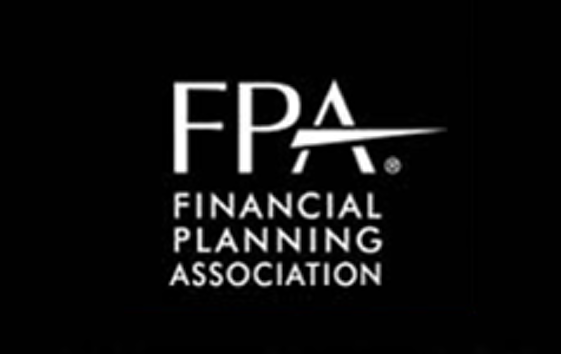 Arsenal Attorneys: A National Firm - Offices in Virginia and California
Arsenal Attorneys: A National Firm - Offices in Virginia and California
Arsenal Attorneys: A National Firm - Offices in Virginia and California
Arsenal Attorneys: A National Firm - Offices in Virginia and California
CONTACT US TODAY
800.819.0608

Arsenal Attorneys
Arsenal Attorneys is a nationwide law practice with offices in Fairfax, Virginia near Washington, DC and in Rocklin, California near Sacramento. We serve large and small clients, often remotely. Depending on the client's location, our services include estate planning, civil litigation, criminal defense, business law, landlord-tenant disputes, real estate, and firearms regulations. Our team of attorneys is licensed to serve clients in over 30 states. Contact us today to discuss your goals.
Beware of Zero Tolerance for Violating DC Gun Laws
By George L. Lyon, Jr, Esq.
The District of Columbia has some of the most severe gun laws in the country. Yet, many people traveling to Washington, DC either don’t consider DC’s gun laws or worse simply believe those laws won’t be enforced against them because they are not using their guns to commit other crime. You do not want to make that mistake.
DC frequently prosecutes gun owners merely for possession of guns, gun accessories, and/or ammunition which would be legal to possess in jurisdictions located just minutes away. Let’s briefly recap DC’s gun laws. It is a misdemeanor punishable by a fine and up to a year in jail to possess a firearm that is not registered in the District of Columbia. DC Code Section 7-2502.01. An exception applies to active and retired law enforcement officers with credentials issued pursuant to the Law Enforcement Officers Safety Act (“LEOSA”).
To register a firearm in the District of Columbia one must either be a DC resident or DC business owner, or have a DC issued Licensed to Carry a Concealed Handgun. The DC License to Carry only allows a nonresident holder to register handguns. Non-residents cannot carry or register a long gun in the District. More on that later.
Not only is it an offense to possess an unregistered firearm in the District, but it is also a misdemeanor punishable by a fine and up to a year in jail to possess ammunition in the District unless one has a DC registered firearm. DC Code Section 7-2506.01. Further, DC considers ammunition to include any component of ammunition, so even a single expended shell can get you charged with this offense, which is called “possession of unregistered ammunition.” DC Code Section 7-2501.01(2).
The District of Columbia does not recognize any other jurisdiction’s carry permits or licenses. Carrying a handgun in the District without a DC issued carry license is a felony. That’s right a felony. DC Code Section 22-4505(a). If you are convicted of that felony, you will become a federally prohibited person and will no longer be able to possess firearms or ammunition anywhere in America.
Transporting a handgun in your vehicle through DC is legal as long as you comply with the Federal Firearms Owners Protection Act. That law requires that the gun be unloaded in a locked container and inaccessible to you with the ammunition stored separate. Your journey must be a continuous one going from one jurisdiction where you may possess and carry the firearm to another where you can possess and carry the firearm. Stopping in DC with a firearm in the car can get you arrested on a felony carrying charge, in which case you will spend at least one night in jail and possibly many more before your trial. Let’s be very clear about this: driving in DC with any long gunin the car can get you charged with felony carrying. DC Code Section 22-4504(a-1). The same with a handgun unless you have a DC issued License to Carry.
Lastly, possession of a firearm magazine capable of holding more than 10 rounds is also now a felony whether or not you are in possession of any gun. DC Code Section 7-2506.01(b).
DC police will not cut you a break because you are otherwise a law-abiding citizen. First, they have no way to know whether you are a criminal or intend to commit a crime. Second, DC’s policy goal is to eliminate the possession of guns entirely, and they have relaxed its guns laws only under court order in several cases. To the extent DC is able to maintain its draconian gun laws, you should assume those laws will be enforced on a zero-tolerance basis.
How do people most often run afoul of DC gun laws? There are many ways. Here are a few:
- Putting a backpack through an X-ray at a governmental building or museum with a gun or ammunition you forgot to remove.
- Getting stopped for a traffic offense and in full view of the police officers is a box of ammunition, some type of firearms accessory, or even just an empty shell casing. This will lead to a search of the vehicle where other ammunition, firearms or magazines could be found.
- Getting stopped for a traffic violation, and either granting permission to search your car or admitting to having a firearm in your possession. Admitting that you screwed up or consenting to a search will not result in the officer letting you go. It will just make it more difficult for your lawyer to argue that your 4thamendment rights were violated. It is best to advise the officer that you do not wish to answer any questions and do not consent to any searches.
If you regularly carry a firearm and have occasion to go into the District of Columbia, consider obtaining a DC License to Carry a Handgun. Although that will protect you from a handgun carry charge and an ammunition charge, it will not protect you if your vehicle contains a long gun, an unregistered handgun, or magazines capable of holding more than 10 rounds.
Arsenal Attorneys’ George Lyon is licensed to practice law in Virginia and the District of Columbia. He was one of the plaintiffs in the Palmer v. District of Columbia case that forced DC to begin issuing concealed carry licenses and in the Heller case that legalized handguns in Washington, DC. Mr. Lyon is licensed by the Metropolitan Police Department to teach the DC concealed carry course and conducts the course monthly. His next classes are scheduled for April 27-28 and May 18-19 in Arlington, Virginia. To sign up for his course, contact Mr. Lyon at gll[at]arsenalattorneys.com or at 703-291-3312.
Arsenal Attorneys is looking for persons who have obtained their DC concealed carry licenses and who would be willing to participate in a civil rights case relating to DC’s myriad of concealed carry restrictions. Contact Mr. Lyon if you have an interest in learning more.
This blog is for educational purposes only and is not intended as legal advice or to create an attorney-client relationship.
Tickets on sale for National Capital Friends of NRA Banquet
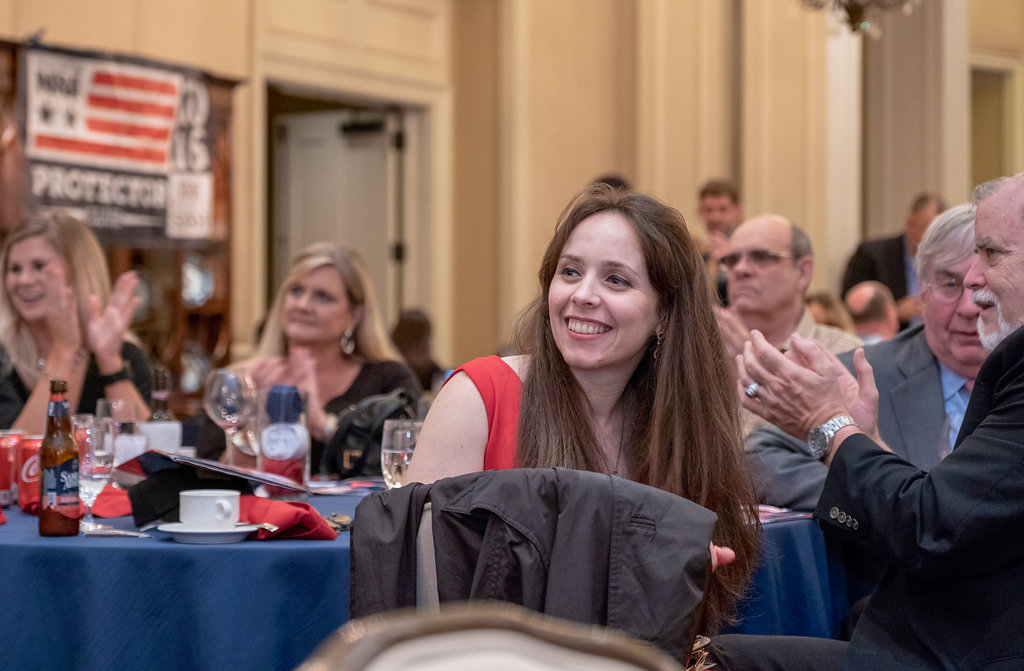 Tickets are now on sale for the fourth annual banquet of the National Capital Friends of NRA taking place on Friday, May 17, 2019 at Army Navy Country Club in Arlington, Virginia. This year's event will feature comedian Tim Young. As always, attendees will enjoy fine dining, games, auction, and camaraderie with beautiful views of the Washington Monument and US Capitol.
Tickets are now on sale for the fourth annual banquet of the National Capital Friends of NRA taking place on Friday, May 17, 2019 at Army Navy Country Club in Arlington, Virginia. This year's event will feature comedian Tim Young. As always, attendees will enjoy fine dining, games, auction, and camaraderie with beautiful views of the Washington Monument and US Capitol.
Arsenal Attorneys are proud to sponsor this award-winning event, which has sold out in its first three years. Special ticket packages are available with prizes, including firearms.
Tickets may be purchased at this link.
Survey of State Laws on NFA Firearms: Silencers in Virginia
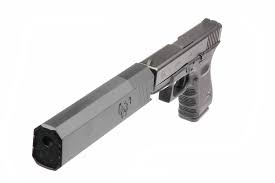 This is the latest in a series of blogs summarizing state laws concerning firearms regulated under the National Firearms Act (“NFA”). It is not intended to be a comprehensive explanation of the law, nor is it intended as legal advice. You should always consult an attorney to determine how the law applies to particular circumstances. In this installment, we review Virginia law on silencers. Follow us to learn how various states regulate silencers and other NFA firearms, such as short barrel rifles and machine guns.
This is the latest in a series of blogs summarizing state laws concerning firearms regulated under the National Firearms Act (“NFA”). It is not intended to be a comprehensive explanation of the law, nor is it intended as legal advice. You should always consult an attorney to determine how the law applies to particular circumstances. In this installment, we review Virginia law on silencers. Follow us to learn how various states regulate silencers and other NFA firearms, such as short barrel rifles and machine guns.
Silencers are legal in Virginia, and they may be used for hunting.
It is unlawful to carry publicly a loaded semi-automatic center-fire rifle or pistol designed to accommodate a silencer in the Cities of Alexandria, Chesapeake, Fairfax, Falls Church, Newport News, Norfolk, Richmond, or Virginia Beach or in the Counties of Arlington, Fairfax, Henrico, Loudoun, or Prince William; however, this restriction does not apply to a person with a concealed handgun permit or engaged in lawful hunting or lawful recreational shooting activities at an established shooting range or shooting contest. See Virginia Code Section 18.2-287.4.
 Arsenal Attorneys serve clients in the area of firearms law. The firm serves clients across America from its headquarters in the metro-Washington, DC area. The firm is particularly renowned for its Arsenal Gun Trust, a solution helping clients in the registering, handling, and estate planning of firearms, particularly those regulated under the National Firearms Act. Arsenal Attorneys' team includes lawyers licensed to practice law in nearly every state where NFA firearms are lawful to possess.
Arsenal Attorneys serve clients in the area of firearms law. The firm serves clients across America from its headquarters in the metro-Washington, DC area. The firm is particularly renowned for its Arsenal Gun Trust, a solution helping clients in the registering, handling, and estate planning of firearms, particularly those regulated under the National Firearms Act. Arsenal Attorneys' team includes lawyers licensed to practice law in nearly every state where NFA firearms are lawful to possess.
This information is provided for informational purposes only, and it is not legal advice, nor does it establish an attorney-client relationship.
How to Use eForms to Submit a Form 1 using an Arsenal Gun Trust
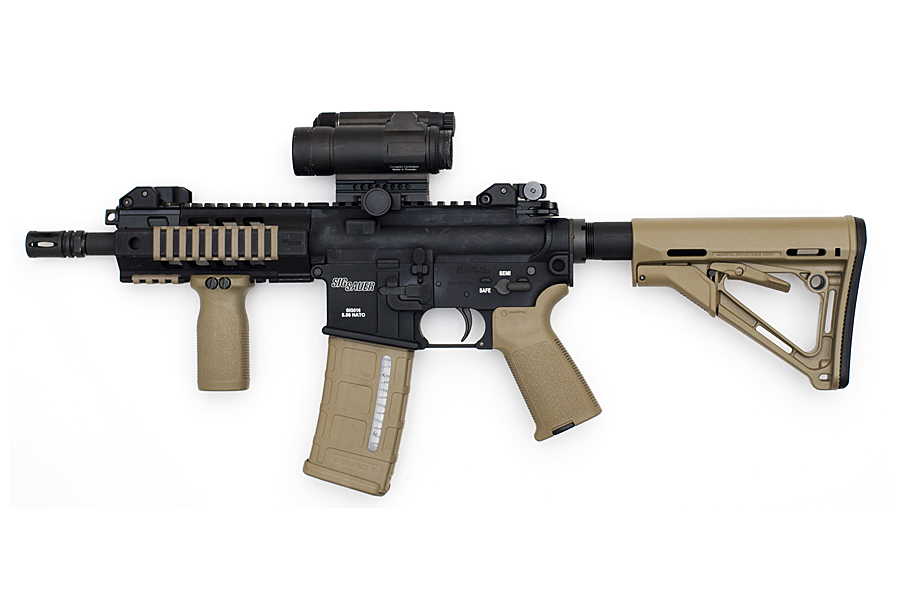 ATF recently relaunched its online system allowing the public to submit ATF Form 5320.1, also known as “Form 1 - Application to Make and Register a Firearm.” Previously, the online system, often referred to as eFile, provided extremely fast approvals. The new ‘eForm’ system already appears to be slashing the wait time for tax stamps compared to ordinary paper applications.
ATF recently relaunched its online system allowing the public to submit ATF Form 5320.1, also known as “Form 1 - Application to Make and Register a Firearm.” Previously, the online system, often referred to as eFile, provided extremely fast approvals. The new ‘eForm’ system already appears to be slashing the wait time for tax stamps compared to ordinary paper applications.
A Form 1 is submitted by an applicant wishing to make a firearm regulated under the National Firearms Act (“NFA”). NFA firearms include machine guns, silencers, short barrel shotguns, and short barrel rifles (“SBR”). The most popular NFA firearm applicants wish to make by submitting a Form 1 is an SBR. A Form 1 may not be submitted to build full auto firearms.
Under the NFA, a trust may be the registered owner or manufacturer of NFA firearms, but not for manufacturing for commercial purposes, which would require Federal Firearms License (“FFL”). A trust offers numerous benefits. Most notably, it could authorize possession of an NFA firearm by multiple people, and it could create an estate plan for the distribution of firearms outside of the probate court system.
Arsenal Attorneys™ have served thousands of clients nationwide using our proprietary Arsenal Gun Trust™ design, and we have taught this area of law for the American Bar Association and the Federal Bar Association among others.
To submit an eForm Form 1 in the name of a trust, follow these steps:
1. Create an eForms account by registering at https://eforms.atf.gov/EForms
2. Select the option to submit a Form 1, formally identified as ATF Form 5320.1.
3. Complete all required fields—remember the applicant’s name would be the name of the trust. All specifications for the firearm to be made must be specific. ATF no longer accetps responses like ‘multi’ to describe caliber, barrel length, etc.
4. Complete a ‘Responsible Person Questionnaire’ (Form 5320.23, known as ‘Form 23’ or the 'NFARPQ') for each ‘responsible person’, who would be required to provide fingerprints and a photograph (the Arsenal Gun Trust design helps clients submit NFA applications involving only a single ‘responsible person’). You must provide a photo for each responsible person identified in a Form 23. After submitting your application, ATF will provide directions for the fingerprinting (see #9 below).
5. Upload supporting documents, particularly the trust document (typically the ‘trust agreement’ and any amendments).
6. Identify your local Chief Law Enforcement Officer (‘CLEO’), who is typically your Sheriff.
7. Use the link to Pay.gov to make the $200 tax payment.
8. Submit the completed Form 1.
9. Check your email for a confirmation of your application from ATF, which should include two attachments. The first is a cover letter to use when mailing your completed FD-258 fingerprint cards to ATF. The second is the copy of your application you must mail to your CLEO. It is your responsibility to provide the CLEO this notification of your application. It is best to mail or ship that document to the CLEO with some sort of delivery/receipt confirmation.
Here is a list of the most Frequently Asked Questions about completed a Form for a Trust--REMEMBER, always confirm you are using the most up-to-date version of any ATF Form because they do change.
Box 2: Remember, the applicant's name is the name of your trust. The address should be the location where this firearm will be located. It should be an address in the same state as your state of residence. If your trust documents include an address that is no longer correct, Arsenal Attorneys can prepare an amendment to make that correction or completely revise your trust by means of a 'restatement' to match the Arsenal Gun Trust design.
Box 3a: Insert your own name and home address as the responsible person of this trust. If there is additional responsible person in your trust, he/she would be identified on a Form 23. The new Arsenal Gun Trust design includes forms customized for you to remove such people so they are excluded from this process and the fingerprinting and photographs. Later, you may appoint a responsible person to your trust, and such a person would not need to provide fingerprints or photographs if he/she were not appointed to your trust in the capacity of a responsible person while an NFA application is in process with ATF.
Box 4b: If you are making an NFA firearm using a firearm previously made by another manufacturer, such as a stripped lower receiver to be built as a new SBR, you must provide the name and location of the original manufacturer identical to how that information appears on the existing firearm/receiver. For an imported item, be careful not to confuse the engraved name of the importer, if any, with the name of the manufacturer. If you are not using an existing firearm to make your new NFA firearm, you must identify your trust as the manufacturer. This would be the case for an 80% lower or a new silencer you wish to make.
Box 4c: You must provide the model identical to how it appears on the existing firearm you are using. Like 4b, if you are not using an existing firearm, you should provide a new model name of your own creation.
Box 4d: As mentioned above, you may not claim 'multi' as the caliber. Specifiy the single caliber which will initially be used for the new firearm to be built.
Box 4e: Always double check you have reported the exact serial number appearing on the existing firearm to be used in making the new NFA firearm. If none, then you may create one of your choosing.
Box 5: Identify the CLEO for the jurisdiction matching the address you provided in Box 3a.
It is hoped that if this new eForms system proceeds smoothly, it will lead to the launch of an eForm 4, to submit ATF Form 5320.4 for the transfer of NFA firearms, such as required in a retail purchase of an NFA firearm like a suppressor.
In the words of one of Arsenal Attorneys’ favorite FFLs, these online systems could bring ATF from 1940s level of technology used for the traditional paper applications and fingerprints toward the 21st century.
 Arsenal Attorneys serve clients in the area of firearms law. The firm serves clients across America from its headquarters in the metro-Washington, DC area. The firm is particularly renowned for its Arsenal Gun Trust, a solution helping clients in the registering, handling, and estate planning of firearms, particularly those regulated under the National Firearms Act. Arsenal Attorneys' team includes lawyers licensed to practice law in nearly every state where NFA firearms are lawful to possess.
Arsenal Attorneys serve clients in the area of firearms law. The firm serves clients across America from its headquarters in the metro-Washington, DC area. The firm is particularly renowned for its Arsenal Gun Trust, a solution helping clients in the registering, handling, and estate planning of firearms, particularly those regulated under the National Firearms Act. Arsenal Attorneys' team includes lawyers licensed to practice law in nearly every state where NFA firearms are lawful to possess.
Most NFA firearms, like silencers, are legal in the following states: Alabama, Alaska, Arizona, Arkansas, Colorado, Connecticut, Florida, Georgia, Idaho, Indiana, Iowa, Kansas, Kentucky, Louisiana, Maine, Maryland, Michigan, Minnesota, Mississippi, Missouri, Montana, Nebraska, Nevada, New Hampshire, New Mexico, North Carolina, North Dakota, Ohio, Oklahoma, Oregon, Pennsylvania, South Carolina, South Dakota, Tennessee, Texas, Utah, Vermont, Virginia, Washington, West Virginia, Wisconsin, and Wyoming.
This information is provided for informational purposes only, and it is not legal advice, nor does it establish an attorney-client relationship.
Top 5 Topics About NFA Firearms and Gun Trusts
 Every day Arsenal Attorneys receives inquiries from across America about trusts and NFA firearms (silencers/suppressors, short barrel rifles, short barrel machine guns, AOWs, full auto, etc.). Here are the five most common topics we address for new and existing clients:
Every day Arsenal Attorneys receives inquiries from across America about trusts and NFA firearms (silencers/suppressors, short barrel rifles, short barrel machine guns, AOWs, full auto, etc.). Here are the five most common topics we address for new and existing clients:
1. ATF Form 5320.20: Remember to submit this form to ATF if you have permanently relocated your NFA firearms. It is also required for interstate travel with NFA firearms, excluding silencers.
2. New Address: If you have a new address, identify this location as your trust's new 'place of administration' in a written statement providing notice to the beneficiary. As a courtesty, our firm drafts these statements for a very small fee.
3. New Design: If your Arsenal Gun Trust was drafted before 2016, or if your trust is not an Arsenal Gun Trust, we can completely revise it by means of a 'restatement.' Our new design provides guidance and customized tools to minimize the impact of Obama era regulations. It particularly helps you remove people before they must provide fingerprints and photos for NFA applications. See #4.
4. Add/Remove People: Contact us if you wish to change the people in a trust, particularly to exclude them from the fingerprint and photo requirements for new NFA applications. Remember, a person needs to provide fingerprints and photos only if they qualify as a 'responsible person' during the processing of an NFA application. We can help you appoint people to your trust after an NFA application is completed and when the fingerprinting and photograph requirements would no longer apply to those persons.
5. You Need a Trust: Ask us for an Arsenal Gun Trust if you want to register NFA firearms, to allow others to possess those arms, and to create an estate plan to avoid the need for new NFA registrations or a public probate court process.
For help with these and similar topics about the National Firearms Act, ATF regulations, and trusts, contact Arsenal Attorneys using our online form at this link.
Road Rage & Guns: Call the Police Immediately
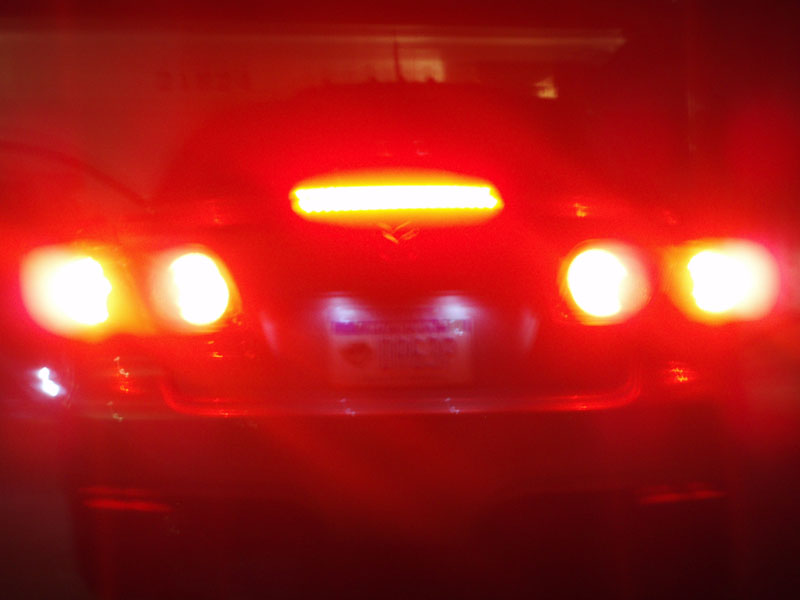
By George L. Lyon, Esq.
Venable firearms instructor Tom Givens (see www.Rangemaster.com) says the “Six R’s’ of criminal assaults are: robbery, rape, respect, revenge and road rage.”
While most people could honestly claim they have never had an issue with the first five of Givens’ six R’s, one study estimates that more than half of all drivers have experienced road rage. Road rage should be taken seriously by gun owners particularly. Even if a road rage incident does not involve fisticuffs, a collision, or gunfire, the handling of a gun to ward off another driver could turn a temper tantrum into a crime.
More than half of all drivers have
experienced road rage.
A road rage incident begins when one driver takes offense at the actions of another driver and decides to “teach him a lesson.” Actions can range from yelling at the other driver to more dangerous actions when the offended driver decides to use his vehicle as a tool to exact retribution. These dangerous actions can include tailgating, continuously shining bright lights from behind during nighttime, cutting in front of the other vehicle and slamming on the brakes (brake checking), attempting to stop the other vehicle and instigating a verbal argument or physical altercation, or in extreme cases trying to run the alleged offending vehicle off the road or pointing a gun at the other driver or shooting.
For anyone, a road rage incident threatens physical safety and would likely result in legal problems. For persons who carry a firearm for personal protection, getting involved in a road rage incident carries an even greater risk of legal difficulties. Let’s look at three recent incidents, all of which vividly demonstrate the need to handle road rage incidents carefully and to contact police immediately.
Incident one. Motorist A is proceeding on the interstate in the left lane. His lane is about to end so he floors it, whizzing past Motorist B in the next lane and cutting into that lane. Motorist B takes offense and pulls up beside Motorist B yelling and veers into his lane causing Motorist A to veer onto the shoulder of the road. Motorist A accelerates and pulls away from Motorist B. In response, Motorist B catches up with Motorist A, who believes Motorist B is about to try to push him off the road again. Motorist A displays a pistol, causing Motorist B to back off temporarily. Motorist B then returns while holding an object out the window. Motorist A believes it might be a gun, and he aims his pistol at Motorist B. The object is actually a camera. Motorist B backs off, incident over, or is it?
Motorist A proceeds to his destination only to be pulled over by the state police who arrest him for brandishing.
Incident two. This incident is very similar to Incident One. Motorist A is driving on the highway and makes a lane change. Next thing he knows Motorist B is tailgating him extremely closely. Motorist A taps his brakes to cause Motorist B to back off. The brake checking apparently provokes Motorist B to the point that he comes up beside Motorist A and like in the previous example veers into Motorist A’s lane while yelling and screaming. Motorist A pulls into the next lane to turn right into a shopping center. Motorist B follows him into it until Motorist A shows him his firearm. Motorist B hesitates and then drives on. Motorist A leaves his car to grab a coffee. When he returns to his vehicle, he finds the police waiting for him. They ask whether he is carrying a firearm. He says yes. They arrest him for brandishing.
Incident three. Motorist A is driving on an interstate highway in the fast lane with a passenger. He soon finds himself behind the slower driving Motorist B. Motorist A flicks his bright lights on and off to induce Motorist B to move over. Motorist B responds with repeated brake checks. Motorist A quickly bypasses Motorist B and races ahead. Motorist B then gives chase well over the speed limit. As the two vehicles are momentarily side-by-side, Motorist B points a gun at Motorist A. Motorist A is legally armed but does not respond in kind. Motorist A makes a high-speed exit off the highway followed by Motorist B. Seeing a red light ahead at the end of the exit, Motorist A decides running the light to escape is better than risking a gun fight, but he then crashes into a vehicle traveling through the intersection in the cross traffic. Motorist B drives on.
Lessons Learned. What did all three innocent drivers have in common here? None of them called the police while the incident was occurring. In the first two incidents the aggressor, rather than the perceived victim, called the police, and the police arrested the victim. In the third incident, police responded to the accident but did not charge the driver who ran the red light. Note, that in the third incident, there was a passenger in the vehicle who could confirm the driver’s story.
Brandishing is defined as holding or pointing to a gun in a
public place in a manner that would reasonably
induce in the mind of another the likelihood of being shot.
Noted firearms instructor and use of force expert Massad Ayoob has explained that the first person to call the police is typically assumed to be the victim, which leaves the other person as the apparent perpetrator. It is obviously necessary to call police if you must shoot in self-defense. However, merely drawing, showing, or even pointing to a concealed gun to stop an attack is a use of force that requires calling the police as well, and if such action is not justified, it is itself the crime of brandishing. In Virginia, for example, brandishing is defined as holding or pointing to a gun in a public place in a manner that would reasonably induce in the mind of another the likelihood of being shot. Brandishing is punishable by up to a year in jail and a $2,500 fine (Va. Code §18.2-282).
Self-defense is a defense to a charge of brandishing. However, a valid self-defense claim requires you to be an innocent party. Innocence plainly means that you did not start the fight. However, in states like Virginia, it also means that you did not provoke the confrontation. Here in Virginia, if you are the least amount at fault in bringing about the confrontation you are required to break from the confrontation, announce your intent not to fight and retreat prior to using deadly force. That fault can arise from gestures, insulting words, or, in the course of road rage incident, retaliation, such as brake checking, tailgating, etc.
Speaking of gestures, firearms instructor John Murphy cautions, “Don’t engage in digital communications.” That is not a reference to driving while texting. Instead, Murphy is referring to the bird, that is to say the display of the most triggering finger other than, well, your actual trigger finger. Murphy illustrates his teaching points with realistic scenarios, and his courses often feature road rage (seewww.fpftraining.com). He strongly advises students to disengage and subdue their ego before something regrettable happens.
“If you think the guy that just cut you off is going to make you late for work, imagine how late you're going to be after a ten year stretch in prison,” remarks Murphy.
When possible, avoidance is the preferred response to danger, but we all must be realistic about the probability of road rage within ourselves and from others. If you find yourself in a road rage situation, it is crucial to contact law enforcement as soon as possible.
George Lyon practices law licenses in Virginia and the District of Columbia as part of Arsenal Attorneys™, a nationwide law practice. He has decades of experience including complex litigation and criminal defense. Mr. Lyon frequently teaches self-defense law and tactics, including the requirements for carry permits in the District of Columbia. He was one of the original plaintiffs in the Supreme Court’s landmark Second Amendment decision in Heller, and he was a plaintiff in the recent Palmer case compelling DC to issue carry permits. On October 20-21, Mr. Lyon will be offering his next seminar addressing DC carry permits, firearms regulations, self-defense law, and tactics. The program will fulfill requirements for a DC carry permit, which are available to non-residents.
CONTACT OUR FIRM
CONTACT US TODAY
Arsenal Attorneys is committed to answering your questions about estate planning, firearms, business law, litigation, and criminal defense issues.
We'll gladly discuss your case with you at your convenience. Contact us today to schedule an appointment.
LOCATION
4000 Legato RoadSuite 1100
Fairfax, VA 22033
800.819.0608









